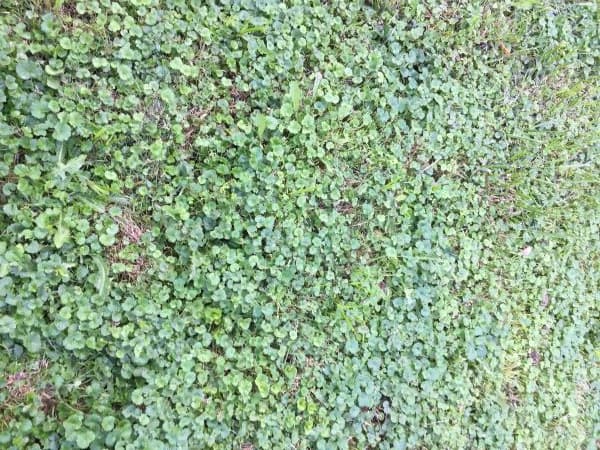Ground Ivy an Invasive Weed

Ground Ivy, an Invasive Lawn and Garden Weed
I’ve never heard anyone say a single nice thing about ground ivy. Thousands of weeds can potentially invade your lawn and garden. Certainly, this weed is among the worst. After it gets established in your lawn, it is very difficult to get rid of. Also called “Creeping Charlie”, it is a hardy, invasive perennial that “creeps” across your lawn or garden at a steady rate. The plant’s vine-like stem grows along the ground in all directions. Once it gets established in your lawn, it’s hard to eliminate. This article describes how to control ground ivy.
Ground ivy produces a pair of green, scalloped leaves every half inch or so along the stem. Root nodules appear beneath each set of leaves. The roots quickly bore into the soil and have the potential to easily create a new plant, if separated from the mother plant. That makes raking this pervasive weed out of your lawn next to impossible, too. Ground ivy is an herbaceous, aromatic evergreen, closely related to the mint family.
We have the early European settlers to thank for this obnoxious, invasive weed. They brought ground ivy to North America, thinking it would make a good ground cover in shady areas. They were right. However, it does so at the expense of desired grasses and other low-growing plants. In addition to growing well in shady areas, they also thrive in full sun, even though much documentation suggests otherwise. The settlers also looked upon ground ivy as an ornamental and as a medicinal plant.
Botanical Name: Glechoma Hederacea
Medicinal Uses of Ground Ivy
Ground Ivy Tincture is used to treat mucus membrane problems of the ear, nose, and throat. It is used for many other things, including arthritis, kidney and bladder problems, sinusitis, lung problems, coughs, bronchitis, joint aches, ringing of the ear, and even to treat hemorrhoids.
Did You Know? “Creeping Charlie” is an easy-to-grow houseplant.
Plant Identification
You will see Creeping Charlie has scalloped leaves, and Creeping Jenny does not. It is a vining plant growing closely along the ground. The vine produces pairs of medium dark green, scalloped leaves. Root nodules develop under each pair of leaves. Creeping Charlie is sometimes mistaken for “Creeping Jenny”. Look at the two plants closely.
Other Names: Gill-on-the-Ground
Ground Ivy Plant Reproduction
In the spring, the plant produces small, bluish-purple flowers. The spent flowers produce tiny seeds, which fall to the ground and readily germinate. The plant grows low to the ground. A lawn mower does not cut low enough to sever the flowers before they go to seed.
Ground Ivy also propagates by root nodules, at the base of leaf stems. So, if you don’t pull out all of the vines, a new plant grows from the root nodule.
How to Control Ground Ivy
In the vegetable garden, heavy layers of mulch, handpicking, or hoeing are the only viable methods of control. Herbicides and weed killers should not be used in or near home vegetable gardens.
For lawns, you can handpick if there are just a few plants. Be sure to pull up the entire plant and remove all parts of it from the lawn. Raking out small patches may help to control it. Keep your lawn healthy and thick, to minimize the opportunity for weeds to gain a foothold.
For large, dense, or out-of-control patches in your lawn, the most practical way to control or eliminate ground ivy, is with a pre-emergence weed killer containing triclopyr. Make sure to follow all the instructions for proper handling and applying weed killers. As a last recourse, you can use an herbicide on a dense patch, then re-seed the lawn a few weeks later.
Importantly, never use herbicides in your vegetable or herb garden.
Did You Know? Even weeds get their day! See Weed Appreciation Day.
Additional Resources
More about Weeds – Certainly as gardeners know, there’s no shortage of weeds in the home garden.
Please support our site. Shop for:
Please support our site. Shop for:
- rmmatthews100@hotmail.com
- 585-721-6528
- Rochester, NY
©1999-2024 GardenersNet.Com, All Rights Reserved

